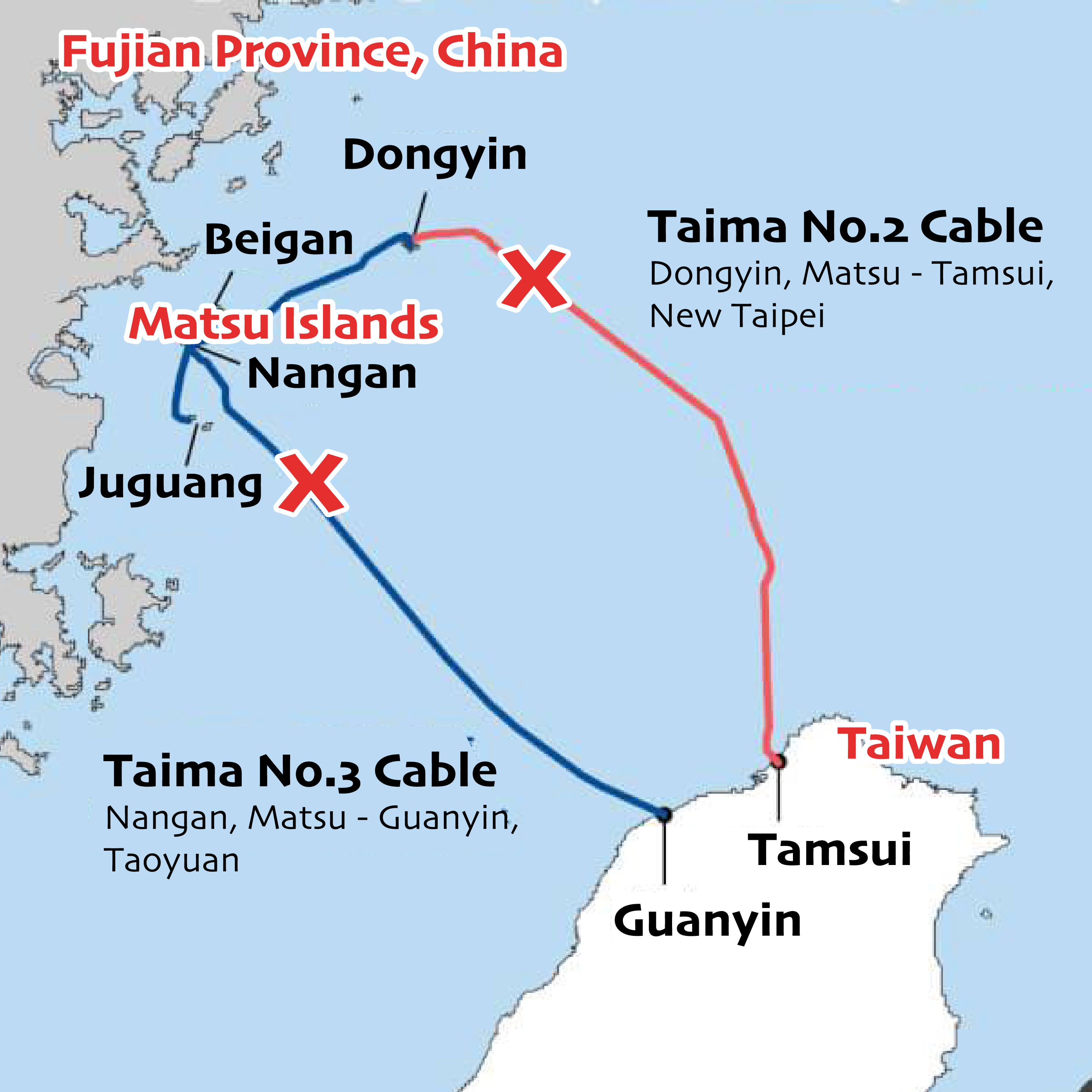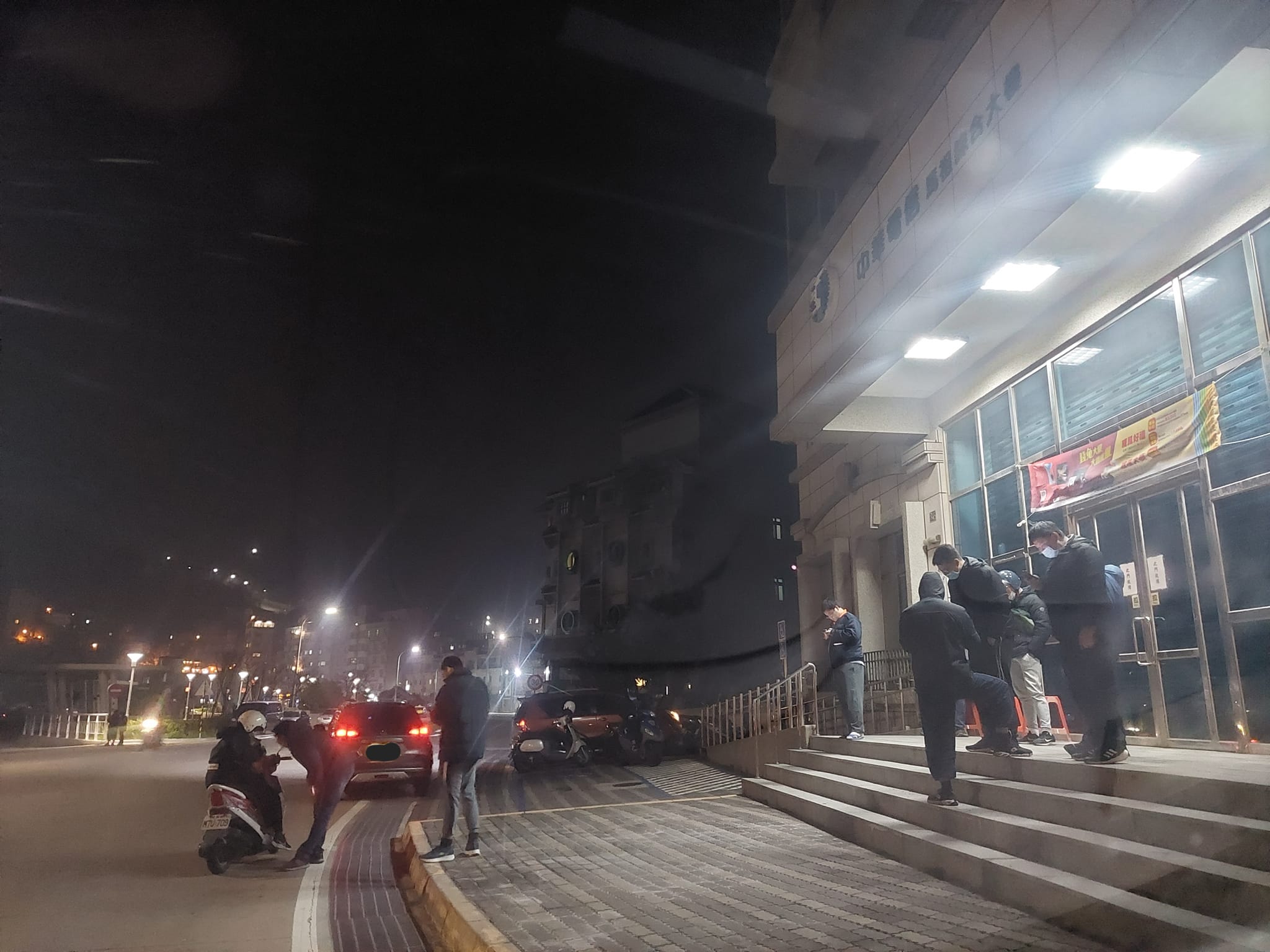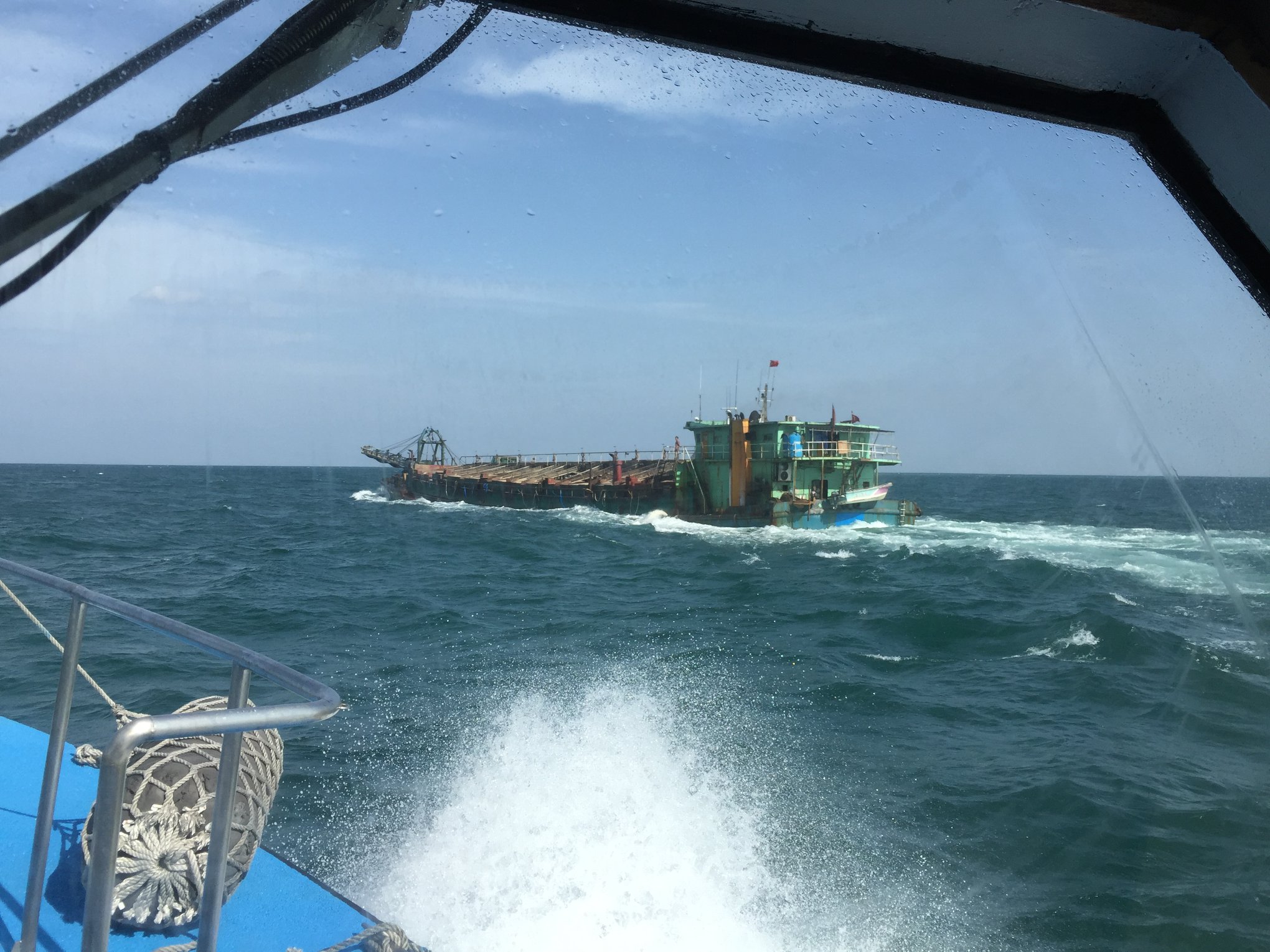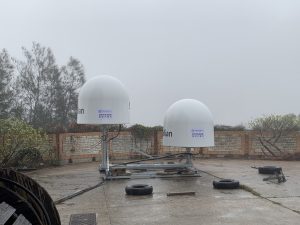On the afternoon of March 31, a collective sigh of relief went through the Matsu Islands, a Taiwanese island group located less than 20 kilometers off the coast of China. A long-awaited cable ship completed repairs to one of the two damaged submarine cables connecting the archipelago with Taiwan’s main island, ending 50 days of limited internet access – or what has been described as an “invisible blockade.”
When Chinese vessels damaged Matsu’s two sea cables on February 2 and February 8, Matsu’s 13,000 residents were effectively cut off from the internet. With both cables damaged, Matsu relied on a microwave radio transmission system which provided limited access until the end of March.
As a resident of Matsu, I discuss on-the-ground experiences from during the internet outage, while also outlining discussions that have followed the incident. Taiwan is working on a multipronged approach for enhancing the security of its communications following the incident – from legislation to protect sea cables, to increased attention on backup systems such as low earth orbit satellite technology, with one example being the successful use of SpaceX’s Starlink system in Ukraine.
The long wait for cable repairs occurred in part because Taiwan does not have its own cable repair ships, while the highly sought-after cable ships often have a packed schedule. While only a single sea cable is required for full-speed internet access in Matsu – the two cables provide backup for each other – Taiwan has also arranged for repairs for Matsu’s remaining damaged sea cable to take place within the next two months.

Map indicating the two submarine cables connecting the Matsu Islands with Taiwan, and estimated locations of the ruptures that occurred in February. Credit: Wen Lii.
Implications for Security and Disruptions to Global Supply Chains
Matsu’s internet outage has sparked many conversations in Taiwan about the nation’s resilience in communications, especially in the context of security threats from China. Commentators have discussed the possibility that the damaged cables were deliberate acts of gray-zone aggression by China.
Regardless of the motivation of the Chinese vessels, Matsu’s experiences should be seen as a warning signal for Taiwan. If an internet outage can happen for Matsu, it could also happen for Taiwan – which highly relies on 14 international sea cables to provide most of the island nation’s data transmissions.
The question on the minds of domestic policymakers and international observers alike carries obvious implications for national security: Is Taiwan adequately prepared to maintain its communications in the case of an emergency?
Given Taiwan’s role as a tech powerhouse, especially in microchip manufacturing, if the nation were to get cut off from the internet, the entire world would suffer from large-scale disruptions in global supply chains. With the critical importance of internet connection to maintain the logistics for just about every industry in the modern world – from food production to electronics – it would be difficult to estimate the wide-ranging impact of an internet outage for Taiwan.
In a wartime scenario, this would also impact the capacity for Taiwan to communicate its needs to the outside world, as well as the ability of residents to receive basic information.
Life With Limited Internet on the Matsu Islands
When the first cable initially broke down on February 2, after being damaged by a Chinese fishing boat, barely anyone in the Matsu Islands noticed. Since there are two sea cables that provide connection for Matsu, internet access remained unaffected. But then the second cable broke down on February 8, this time the result of a Chinese cargo ship dropping its anchor on the unfortunate cable. From that moment on, Matsu was effectively cut off from the internet.
Matsu’s main telecommunications provider, Chunghwa Telecom (CHT), switched to a backup microwave radio transmission system. The backup system provided a bandwidth of only 2.2 Gigabit per second (Gbps), whereas internet usage in Matsu usually requires a total bandwidth of 8 to 9 Gbps provided by sea cable connections. The transmission station, based in a mountain in Taipei, broadcasted radio-based signals across a 200-kilometer stretch of water over the Taiwan Strait.
Throughout February, internet connection in Matsu was barely functionable, leading to a large impact on the local economy. In many sectors, from tourism to daily logistics for local businesses, life came to a temporary standstill. Sending a text message could take 15 to 20 minutes, while it was nearly impossible to access websites – from e-commerce platforms to hotel booking sites. Video and audio content was out of the question.
The backup system provided preferential bandwidth access to a list of important facilities: government agencies, military units, hospitals, as well as CHT offices. However, ordinary internet users and private businesses suffered from extremely slow connection.
CHT set up around-the-clock wifi hotspots at its shops or offices on each island. Throughout February, CHT venues became the hottest spots in town, with people gathering in the stores during business hours, even sitting outside plastic stools. This resulted in the unusual scene of residents gathered outside of CHT venues at night in the cold winter weather of Matsu.

In February, internet users gathered outside the Chunghwa Telecom offices at night in Matsu to use the wifi hotspot. Photo by Wen Lii.
On March 6, expansion projects were completed for the microwave transmission stations, a result of emergency construction implemented by Taiwan’s National Communications Council (NCC). This led to faster internet speeds, with the bandwidth increased from 2.2 Gbps to 3.8 Gbps. Further plans to expand the microwave transmission system to 8 to 9 Gbps will get completed by the end of 2023, which would ensure normal internet speed in case of similar incidents in the future.
The partial bandwidth expansion in March was helpful for residents. Sending a text message now took around 1 minute, instead of 15 minutes. Despite the relatively slow speed, web sites were once again accessible, and local businesses restarted many of their online activities. Still, limited internet access continued until one of the cables was fixed on March 31.
How to Deal With Frequent Ruptures
Matsu’s sea cables have been damaged 30 times since 2017. Out of these 30 cases, 10 ruptures were caused by Chinese sand dredging activities near the Matsu Islands, and the others by bottom-trawling fishing boats or dropped anchors of cargo ships. A sea cable that has already been damaged can break again at a different location, with the increase in rupture points requiring additional time and resources for repairs.
In most cases, these incidents went unnoticed if damages to the two cables did not overlap. In May 2022, Matsu experienced a short internet outage, which lasted only for around 10 days, in a rare instance when both cables were down at the same time. That particular internet outage ended quickly only because one of the cables had broken in late 2021, leading to an earlier reservation for the cable repair ship being made in advance.

Chinese sand dredgers have caused damage to submarine cables near Matsu in the past. Photo by Wen Lii.
Among the flurry of conversations that have taken place since the major outage in February and March, one area of discussion has focused on providing more protection for Taiwan’s submarine cables. The NCC has announced plans to build an additional sea cable for Matsu by 2025. The council has also reportedly demanded CHT to invest in its own cable repair capabilities: most likely by purchasing its own cable repair ship.
On March 29, the NCC proposed a draft for amendments to the Telecommunications Management Act. If passed, the amended version would expand protection for sea cables by imposing a jail sentence of up to ten years, as well as heavy monetary fines of up to NT$100 million for the damage of sea cables, with the extremely high-priced repair process taken into account.
Another major area of debate has centered on the urgent need for Taiwan to develop satellite technologies as backup, reflecting upon success in Ukraine. Taiwan’s Ministry of Digital Affairs (MODA) has been working on a satellite system for emergencies.
MODA recently began testing for a non-geostationary orbit (NGSO) satellite system, as part of a plan that would set up 700 ground stations across Taiwan. In response to Matsu’s internet outage, one of the first locations for these tests took place in Matsu. Meanwhile, Taiwan also urgently needs international assistance on the application and development of new technologies, such as low earth orbit (LEO) satellite systems.
As the nation waits for the cable repair ship to arrive from abroad to fix Matsu’s second damaged sea cable, Taiwan continues to work on its multipronged approach to strengthen the resilience and security of communications.

































